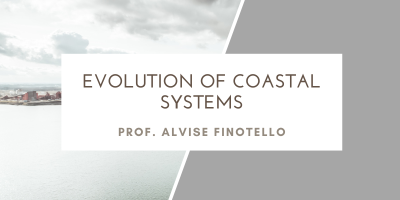Evolution of Coastal Systems

Period: First semester
Course Unit Contents:
INTRODUCTION
Morphodynamics and biogeomorphodynamics. Brief overview of coastal systems and their morphodynamic evolution in response to physical and biological forcings. (0.5 CFU)
COASTAL PROCESSES
Coastal processes. Relative sea level and its variations. Tides, waves, coastal currents, and sediment transport processes in shallow-water environments. (1.5 CFU)
COASTAL ENVIRONMENTS
Morphology and evolution of coastal systems. Focus on coastal wetlands, barrier islands, lagoons, deltas, and estuaries (more if time allows). Analysis of the main biophysical mechanisms governing their morphodynamics. (2.5 CFU)
Impacts of environmental change. General effects of sea-level rise; natural and anthropogenic forcings; impacts of climate change on lagoons, deltas, and estuaries. (1.0 CFU)
CASE STUDY
The Venice Lagoon. A detailed case study of its morphological evolution over the past centuries and current challenges. Will Venice survive? (0.5 CFU)
Planned learning activities and teaching methods:
The course will be based on classroom and laboratory teaching, incorporating student-centered methodologies designed to actively engage students throughout the learning process. These include flipped classrooms and practical activities focused on the interpretation of experimental results and the analysis of data from specific case studies, intending to foster critical thinking.
Lectures will introduce theoretical concepts alongside the discussion of real-world examples and case studies.
Laboratory experiments will involve scaled physical models (e.g., of river deltas) to illustrate fundamental dynamics of coastal systems, promoting observational learning.
Simple (bio)morphodynamic models will be employed to quantitatively analyze the evolution of coastal systems in response to environmental forcings such as sea-level rise, sediment supply variations, and extreme storm events.
Teaching methods may be adapted to meet specific student needs (e.g., limitations related to laboratory activities), provided that such needs are communicated to the instructor through the appropriate institutional channels. Similarly, individual and flexible learning paths may be arranged for students with certified Special Educational Needs (SEN) or Specific Learning Disorders (SLD), depending on feasibility and in accordance with institutional policies. In addition to contacting the course instructor, students with disabilities, Specific Learning Disorders (SLD), Special Educational Needs (SEN), and other health conditions can reach out to the Student Services Office - Inclusion Unit to receive more information about opportunities to access teaching with specific support and tools.
At the end of the course, students will be invited to complete a feedback survey aimed at gathering suggestions for improving future editions of the course.
The use of AI tools is encouraged as an active and critical learning aid, including support in data analysis. However, students are expected to demonstrate independent critical thinking, particularly in identifying and addressing possible errors generated by AI.
